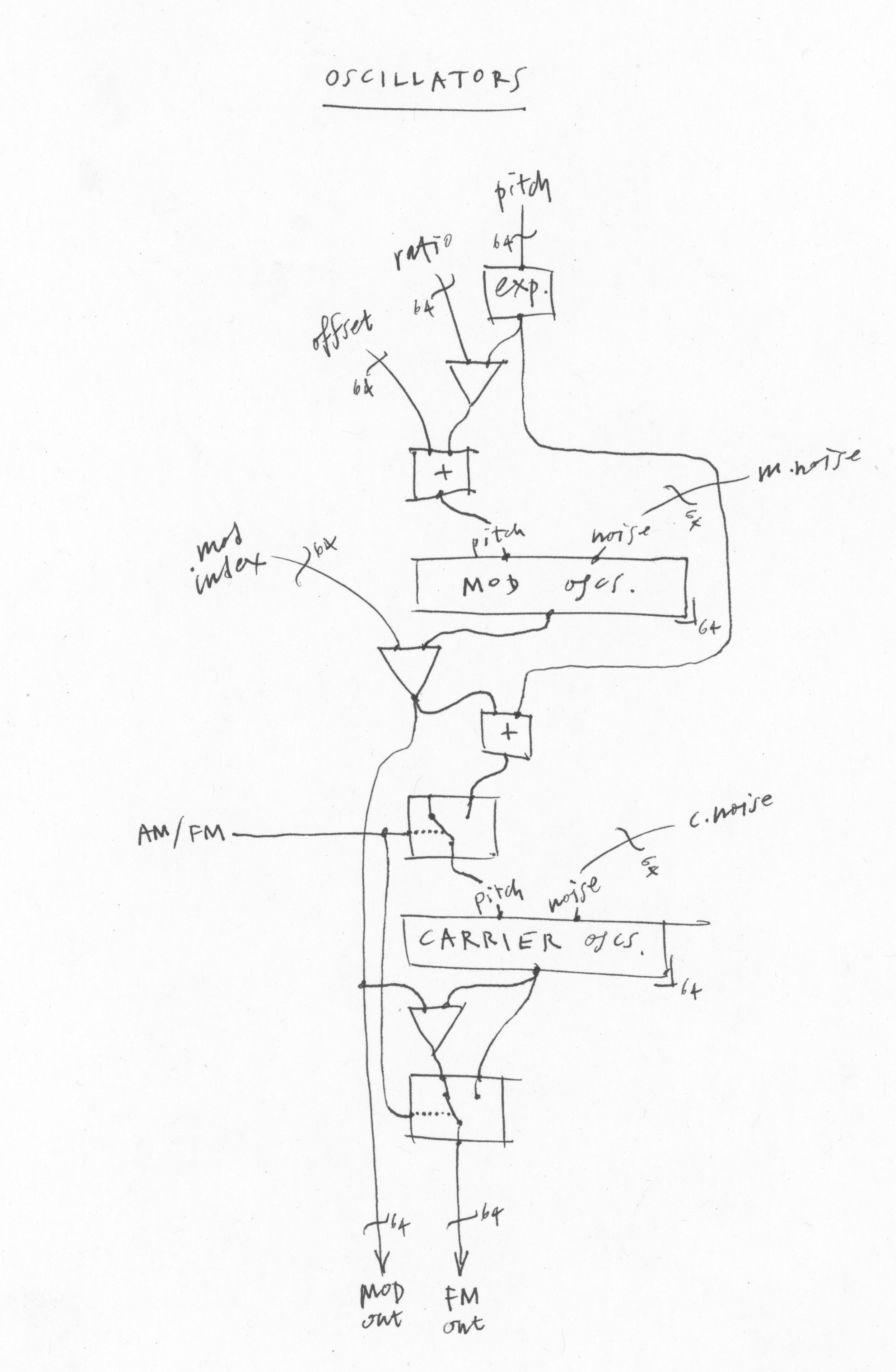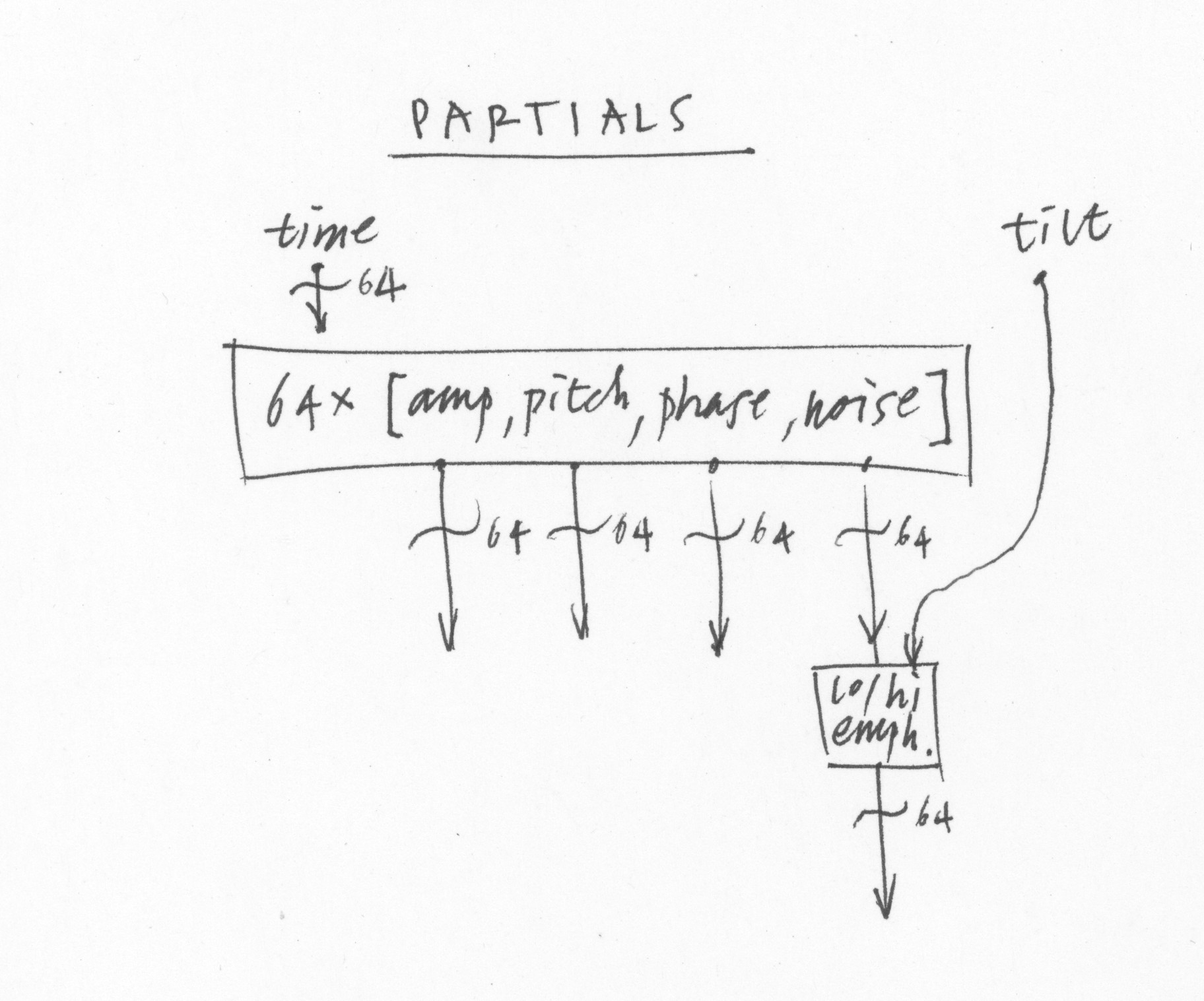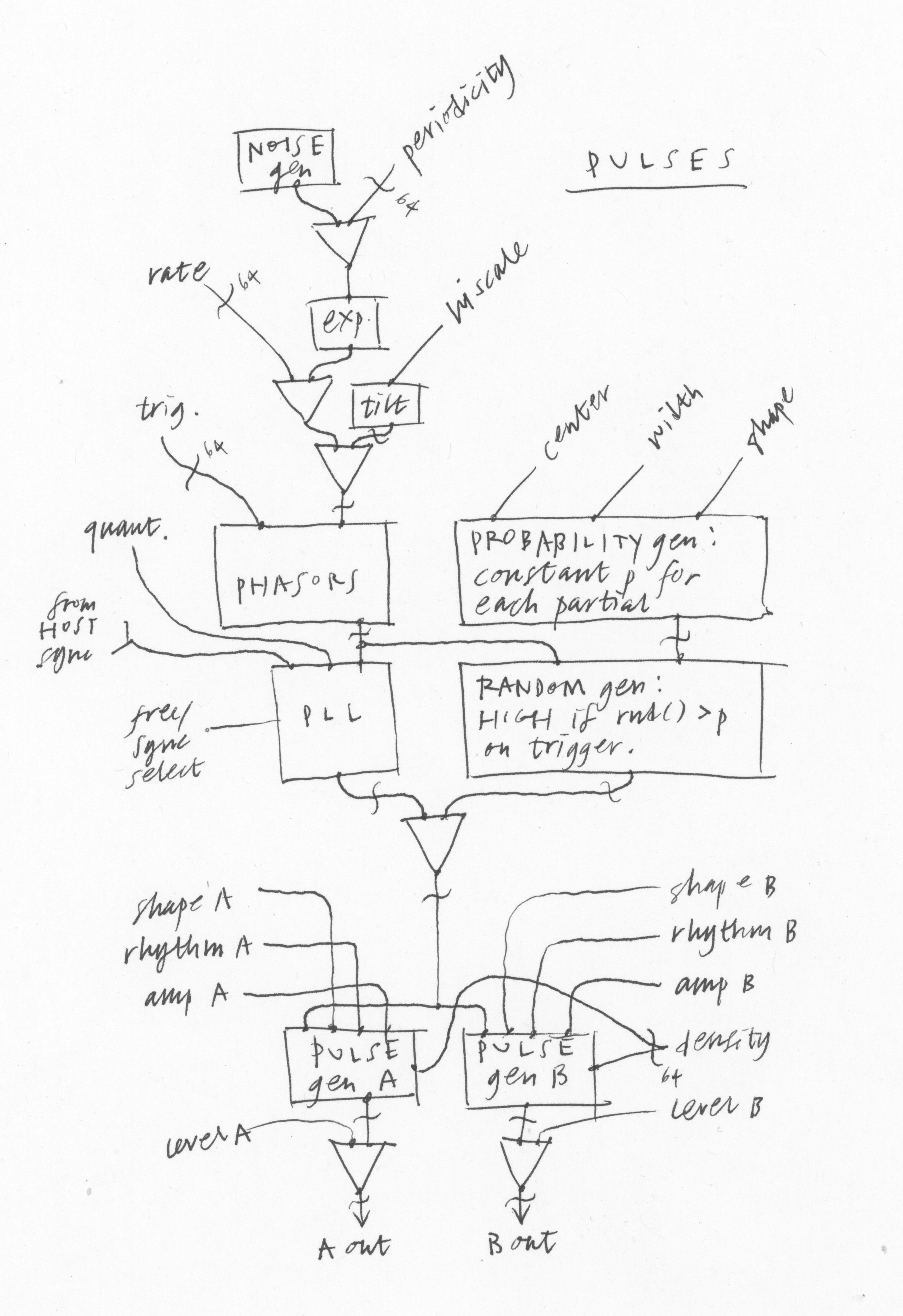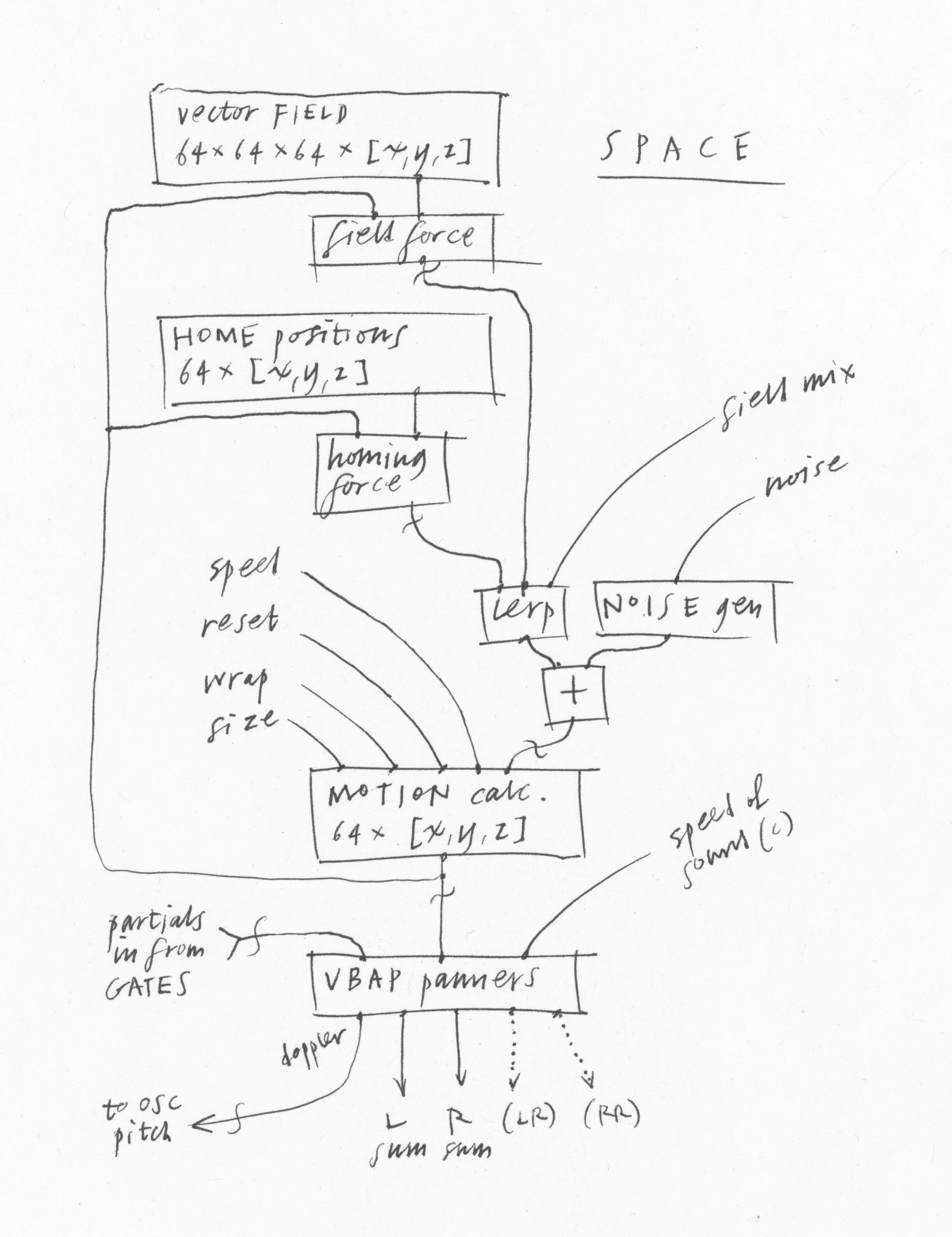randy's Recent Posts
of course!
I get this a lot! Thanks for the encouragement.
That's good to hear. I think the "no sound" bug may be multiple issues. I have some things to fix for the next release coming soon.
Yeah this should be straightforward. Thanks for the good words!
I tried very hard to reproduce this consistently and it's not happening. A single time, the sound engine locked up and the output scope was high as shown in the previous picture. I was all excited to dive in and fix but I can't get it to happen again.
Please, send any steps that lead to the issue consistently.
Also, if you are running into the problem, try making a brand new Sumu in a new Ableton project with the latest beta. Try saving and reloading. Can you get this to freeze? I'm thinking maybe, it was an old set of parameters in Ableton with a newer plugin version that's causing it.
When there is no sound does the output scope freeze like this?

I can add this to Vutu sooner!
I fixed the partials display and the crash. FYI VCV Rack still has other UI and display issues with Sumu.
Sumu is an additive instrument that I've had in the works for a long time. Now that it's nearing completion and heading towards a public beta soon I'm going to break with the way I normally do things and put some detailed info out ahead of its release.

Sumu is another semi-modular instrument. It shares the general appearance of its patcher-in-the-center design with Aalto, Kaivo and Virta. As you can see, it's on the more complex end of the spectrum like Kaivo. Everything is visible at once and there are no tabs or menu pages to navigate, which suits the way I like to program a synthesizer tweaking a little something here, a little something there.
In the same way that Kaivo brought two different and compatible kinds of synthesis together, combining granular synthesis with physical modeling, Sumu combines advanced additive synthesis with FM synthesis.
What's most different about Sumu compared to my other synths is that the signals in the patcher are not just one channel of data, but 64—one for each partial in a sound! By keeping all these channels of data independent and still using the same patching interface, Sumu offers a very usable entry point into additive synthesis, and a range of musical possibilities that have only been approachable with high-end or academic tools or just coding everything yourself... until now.

Each of Sumu's oscillators is the simplest possible kind of FM:a single carrier+modulator pair. And the modulator can produce a variable amount of noise, which like the modulation ratio and depth can be controlled individually per oscillator. In a single voice there are 64 such pairs. Obviously a lot of sounds are possible with this setup—in fact, with the right parameters varying appropriately we can reproduce any musical sound very faithfully with this kind of oscillator bank.

There are a few ways of generating all of those control channels without the kind of painful per-partial editing that some of the first digital synths used. The first is the PARTIALS module up top, where you can see a diagram of all the 64 partials over time. This is like a sonogram style of diagram where x is time, y is pitch, and thickness of each like is amplitude. There is also an additional axis for noisiness at each partial.
A separate application will use the open-source Loris work by Kelly Fitz and Lippold Haken to analyze sounds and create partial maps.

Another way of generating control data is with the ENVELOPES module. It’s a normal envelope generator more or less—except that it generates 64 separate envelopes, one for each partial. Generally you would trigger them all at the same time, but each does have its own trigger so they can be separate. Using the “hi scale” parameter the high envelopes will be quicker than the low ones, making a very natural kind of lowpass contour to the sound.

Finally on the top row there’s the PULSES module. This combines an LFO and a randomness generator into one module. The intensity and other parameters of the pulses can be different for every partial. So this makes modulations that can be focused on a certain frequency range, but you don’t have to mess around editing partials one by one. You could also, for example, use the pulses to trigger the envelopes all at different times.
The PULSES module was inspired by my walks in a small canyon near my house, and listening to the very finely detailed and spatially spread sounds of water running in a small creek. Each drop contributes something to the sounds and the interplay between the parts and the whole is endlessly intriguing.
To make a water drop sound, two envelopes are needed at the same time: a rise in pitch and an exponential decay in amplitude. So PULSES lets you put out two such envelopes in sync. Then of course we generalize for a wider range of functions, so we can find out, what if the drops were quantized, or had different shapes over time? A voice turning into a running river is the kind of scene that additive synthesis can paint very sensitively. The PULSES module is designed to help create sounds like this.

The SPACE module lets us position each partial in the sound independently. Coming back to the creek idea, we can hear that certain pitch ranges happen in certain locations around us due to the water speed and the resonances of different cavities. This all paints a lively acoustic scene. By positioning many little drops independently, while allowing some variation, we can approximate this kind of liveliness.
This module centers around two kinds of data, a set of positions for each partial known as home, and a vector field: a direction [x, y, z] defined at each point in a 3-dimensional space. There will be a set of both the home and the field patterns to choose from. By offering these choices, and a small set of parameters controlling the motion of the partials, such as speed, the homing tendency, and the strength of the vector field, we can quickly create a wide variety of different sonic spaces without the tedium of editing each partial independently.
The RESONATORS module is very simple and inspired by the section of the Polymoog synthesizer with the same name. It’s simply three state-variable filters in parallel, with limited bandwidth and a bit of distortion for that “warm” sound. In Sumu, a synth we could otherwise describe as “very digital,” it’s nice to have a built-in way of adding a different flavor.
So I have this interface you see above, and a sound engine, and I'm working feverishly to marry the two. To enable all of the animations and the new pop-up menu, I wrote a whole new software layer that provides a completely GPU-based UI kit and interfaces directly with the VST3 library. Because it's been such a long process this time, I'm going to "build in public" more than I am used to doing, and have a public beta period. My plan is for this to start in December. Meanwhile I hope this information gives you interested folks something to whet your appetites, and even a basis for starting to think about what kinds of patches you might want to make.
When you do the analysis in Vutu, you need to manually set the fundamental pitch for the sample. This is done with the "fundamental" dial at right. You can use "Fund. volume" to hear a test tone at that frequency.
I see what you're saying about before analysing though so I hear you had that covered. I'll leave it here in case it helps anyone else.
I'm guessing it's a sample rate problem where Vutu is not doing the right thing. a semitone is suspiciously close to 48000/44100. (1.06 vs. 1.08) Maybe your system is at 44100, the sample is at 48000 and it's not doing the right thing. Just a guess. Let me know if this seems to be the issue, for example if resampling the source before using Vutu fixes the problem.
Yes, you're good on the Metal front, I think all the product lines had it by 2012.
Hi @aejonel,
This is a good question. I would say it's relatively safe. A patch should sound like itself going forward. But this is where it gets fuzzy- i might make minor changes that I feel are improvements to sound quality, and if you're very detail-oriented, you might not think these are as minor!
An example of the kind of change I will make is reducing aliasing when FM is used. So a patch might get a little less harsh.
Sorry its not going smoothly, I'll have an update out soon that should address this.
I think Ableton's MIDI mapping through the Configure menu is really useful. I'm not sure why you would like mine better, but I do plan to add it. Mostly for people using other DAWs.
I'm trying to reproduce the no-sound issue but having no luck. Can someone break it down for me into a few steps that I can try? For example:
- open Live 12
- add a new Sumu
- switch to patch "X"
- save the Live project
- close Live
- open the project again
expected: playback of patch X
what happened instead: no sound.
Maybe it's a particular patch I'm not using. I'll keep trying here.
It also crashed Logic Pro. I have emailed you the details and included the crash log.
Thanks for the info, hopefully I'll track this down soon. I'll send you any follow up questions via the support email.
Hi Les,
Thanks for the detailed report. I think I know what's going on here and I should be able to get a bugfix release of Aaltoverb out very soon.
I am encountering a new bug where patches will just start pulsing...
I don't know what you mean by this pulsing, can you capture audio or better yet video? Or if you think a specific patch will reproduce it, send me the patch with instructions.
I've also noticed that the scale dial in Space also tends to generate audio artifacts when modulated
The scale dial will send all the partials back to the home position whenever its value changes. These home positions are where the partials go when a reset pulse is received for that partial, or when the partial goes outside the bounds and "far" is set to "home." So, modulating scale will definitely be jumpy, depending on how often your DAW feels like sending dial movements to a plugin.
I did this "auto-jump" so people could see/hear the size of the home configuration when they turn the dial. Maybe there's an argument for not doing it, I'll think this one over a bit.
there appears to be value scaling issues when automating different parameters in Ableton,
This is not enough info for me to investigate, can you send me more detail with what you expected to have happen (the parameter should go to 1.0) and what happened instead (the parameter went to 99) ?
Please send any files / additional info to support@madronalabs.com - thanks!
but will there be a "final call" for the early access discount?
yes, I'll let people know via the email list and offer 1.0 for at least a few days before the price goes up to full.
but... do you know when MPE and OSC will be added?
MPE will be added for 1.0.
OSC... I'm not sure if I should keep that feature around. There are only a handful of people using it in Aalto etc, and now that MPE exists I see less of a need for it. If OSC is working better for anyone than MPE (as I feel it does, sometimes), it's more of a reason to make MPE better than work on OSC, this way more people will benefit from the work.
Thanks for the good words.
I'm planning to do an update of Early Access every few weeks until it's done, with 1.0 being in another 8 weeks or so.
Thanks for the report. Sorry to hear things went backwards on this one platform. I guess the next step is for me to get a copy of Patchwork and try it here.
Also please add your computer hardware info. Sumu currently requires Apple's Metal library, here's a list of compatible computers: https://support.apple.com/en-us/102894
Thanks for the comments—what's harsh is very subjective, and another person might want to make sounds that you think are harsh. So my job is to leave room for all these possibilities!
When the filter is in "thru" mode, it doesn't take up CPU. Disabling space also is a reasonable idea. I'll take a look thanks.
Yes the filter section is very non-linear so turning up the gain 2x pre-filter will not result in 2x after. The output volume dial is post-filter and this is part of the reason for that. If you want more precise metering I recommend YouLean's loudness meter.
Thanks for this and the other reports. I'll look at them for the next update.
Thanks for the update
Thanks for the feedback!
Are there plans to make it resizable or different scaling options in the future?
It is resizable now. I did see the resizer disappear once and make a note to investigate. Can you please make a screen shot with the missing resizer and send it to me, and include your resolution settings in it?
It may work for you at a different resolution.
The 1.0.0b15 release of Sumu, also known as Early Access 2, is now available on the Sumu page. It has the following changes since Early Access 1:
ui: fix bug if Scope was drawn before resize (crash on launch)
ui: fix collectionPicker bug not showing last few files
ui: fix excess drawing of Popup menus (caused slow UI)
ui: fix too-big window on creation
ui: remove mouse reposition on windows pending fix
pulses: allow turning bpm down to 0
demo noise: half as loud and half as often
core: fix recent mod osc sound bug
core: fix AM sound bug
core: fix beta expiration bug
patches: set all to 4 voices
patches: fix inaccurate Fargo quote
Thanks for your good reports that led to some of these fixes. And if you were trying to run Reaper, Cubase or Studio 1 on Windows, thanks for your patience—the problem affecting those DAWs is fixed.
It's June 1 and Sumu users will see a message that your beta has expired. This is obviously a mistake on my part and I'll be working to get an update out today. I'm sorry for any inconvenience!
fixed, thanks for your patience.
Isnt this the same type of converting audio as Harmor (fl-studio) does?
No one else aside from Kyma is using Loris analysis as far as I know. It's a little more involved to get the right parameters but it lets you do more with a given number of partials because of the enhanced bandwidth nature.
I am lucky for this community. I don't personally enjoy flogging. I do like long walks on the beach, and weird sounds.